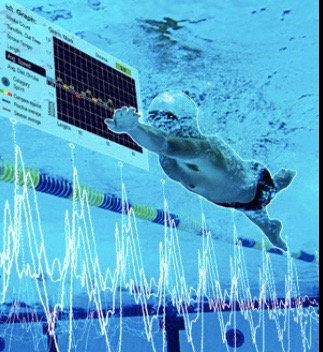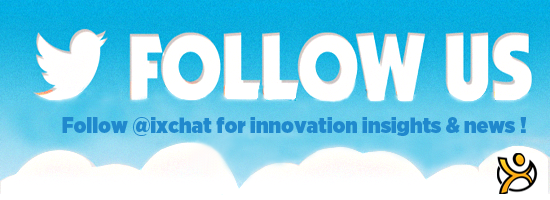The Essential 4-step Product Innovation Process [podcast]

I love hearing how companies are creating successful products that provide customers value, which is the topic of this episode.
Gordon Stannis, the Director of Design and Strategy at Twisthink shares their approach to developing innovative solutions for their Fortune 500 clients.
Gordon started his work as an industrial designer and then moved into product development and management roles.
We discuss the process Gordon uses for creating innovative products, and he shares the product journey of a tool for competitive swim coaches as an example of the process.
Here is a summary of the topics discussed and a link to the interview:
- [2:26] How has product design changed? 15 years ago clients told us what they wanted and we would design a product that met their needs. Today we design user experiences, services, and products as an integrated package after first discovering unmet needs of customers. The creation of tangible products has shifted to the creation of services.
- [4:12] What is your approach to designing products? First, we align our language with our clients. We need to be chameleons and use the language our clients do. We understand them and their needs. We use the analogy of bridges half constructed because we build bridges between where clients are with their product needs and where they want to go. We embrace failing as part of the design process, and we plan to fail a lot during the front-end of product design so we don’t fail on the back-end. Failing simple means we are learning. When we fail we learn knowledge that competitors are unlikely to have. Failure Lab is a useful site that showcases the learning from personal stories of failure.
- [13:52] What are the steps in your process? What is interesting is how the process has changed over our history. 15 years ago clients provided marketing requirements documents. We haven’t seen those in years – no one has time for such documents anymore. Now we identify the “hill†the client wants to pursue. This is investigated during the initial discussions with the client. This is like therapy sessions – you could call it innovation counseling to discern where they want to go and why they want to go there. This is the first step.
- [15:57] What is the next step? At some point during the innovation counseling sessions, someone will share a magic sentence that becomes the North Star for the project – a clear sentence that describes where we are heading. For example, in one session the North Star statement was “we want to use design technology and strategy to allow a coach to be a better coach and an athlete to be a better self-coach.†This example became a product used by 13 USA Olympic swimming champions. We then build plans to support the North Star.
- [17:33] What comes after the North Star? We have to understand the market and develop a great depth of empathy for the customer. We hang out with the customer in their environment. Continuing the example, we hung out at pools where high-end competitive coaches work, to understand what they want to accomplish and the challenges involved. From this, we create a picture of what would be valuable to customers.
- [19:12] What do you do with the understanding of the customers’ problem? We fast forward and do pre-design. This is not a real solution design phase but a quick and intuitive view of what elements of a solution could look like. For the swim coach challenge, we took our understanding of the problem and made simple prototypes and a product video showing the prototypes in use. We had the opportunity to attend a swim coach tradeshow to get feedback from coaches. We created a fake company and had a booth at the show with our simple prototypes and product video. We told coaches we could collect 10 metrics from a swimmer and we asked hundreds of coaches which of the 10 were most important. We left the show with a priority ranked set of metrics, knowing what was most important to the customer. In a sense, this was an elaborate smoke test. The same can be done with a Kickstarter campaign.
- [25:00] Knowing the product priorities, what comes next? For the swim coach problem, we had technical challenges to overcome. This requires engineering exploration to solve the issues and find technical solutions.
- [28:30] Is there more to the solution? From the tradeshow, we knew what metrics swim coaches needed, but we still had to design the user experience so the data would be instantly understood and appreciated by coaches. We designed variations and showed them to coaches. We used the smile test – if the coaches smiled instantly when they saw the data displayed, we knew we had the right design. For this product, getting the digital dashboard “right†was essential to its success. The right dashboard creates demand from customers for the solution.
- [33:00] Is there more to this process? The cycle is: create, prototype, test, learn and then repeat. In my experience, I have found that six cycles should be used. No one has ever regretted doing one more cycle but they have regretted not doing another cycle. Remember you are not your customer; you have a lot to learn about their needs and what solution will provide the most value.
 Listen to the interview with Gordon Stannis on The Everyday Innovator Podcast for product managers and innovators.
Listen to the interview with Gordon Stannis on The Everyday Innovator Podcast for product managers and innovators.
Wait! Before you go…
Choose how you want the latest innovation content delivered to you:
- Daily — RSS Feed — Email — Twitter — Facebook — Linkedin Today
- Weekly — Email Newsletter — Free Magazine — Linkedin Group
 Chad McAllister, PhD. is a product innovation guide, innovation management educator, and recovering engineer. He leads Product Innovation Educators, which trains product managers to create products customers love. He also hosts The Everyday Innovator weekly podcast, sharing knowledge from innovation thought leaders and practitioners. Follow @ChadMcAllister
Chad McAllister, PhD. is a product innovation guide, innovation management educator, and recovering engineer. He leads Product Innovation Educators, which trains product managers to create products customers love. He also hosts The Everyday Innovator weekly podcast, sharing knowledge from innovation thought leaders and practitioners. Follow @ChadMcAllister
NEVER MISS ANOTHER NEWSLETTER!
LATEST BLOGS
The Incredible Shrinking Laptop
As technology advances and people’s demands for ever-thinner, ever-lighter laptops increase, more and more the thickness of a laptop is…
Read MoreA Revolution in Management Consulting?
Management consulting firms are built on a model that requires the maintenance of a bench of their people to staff…
Read More



